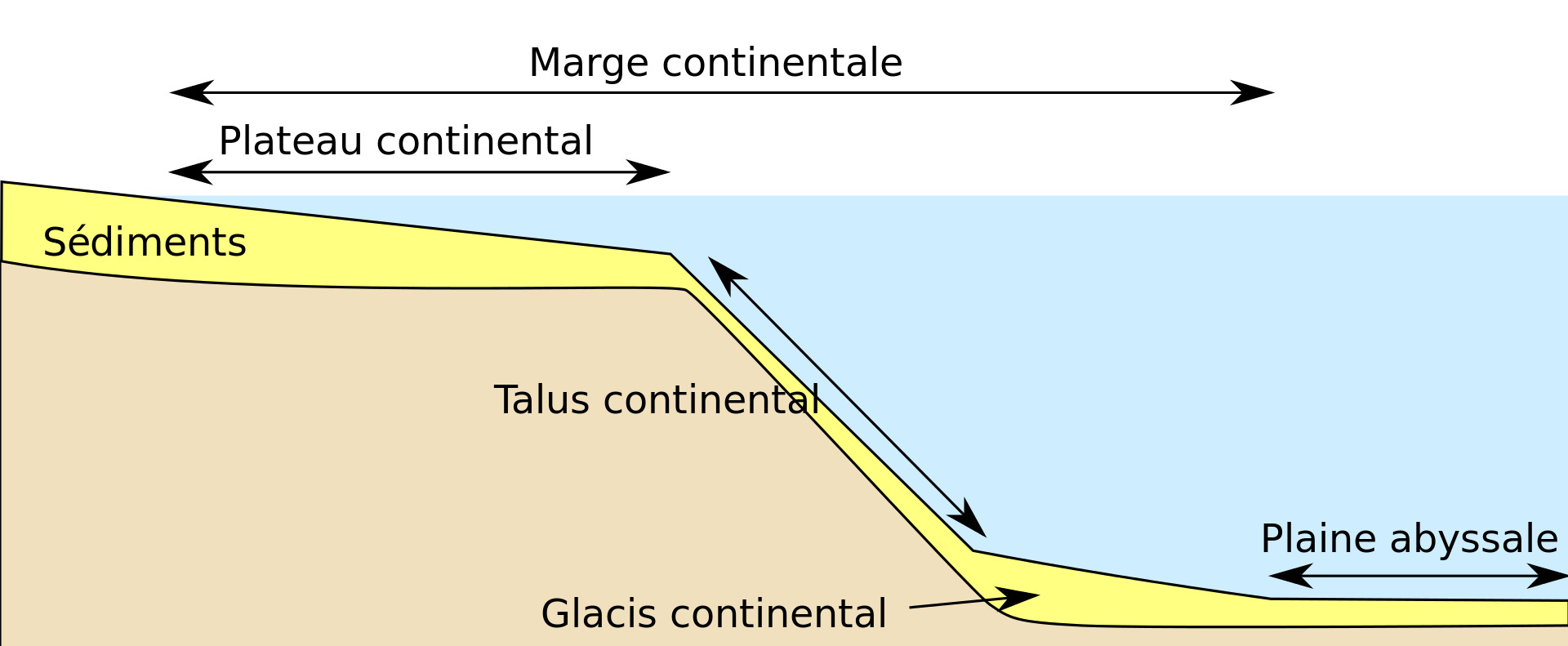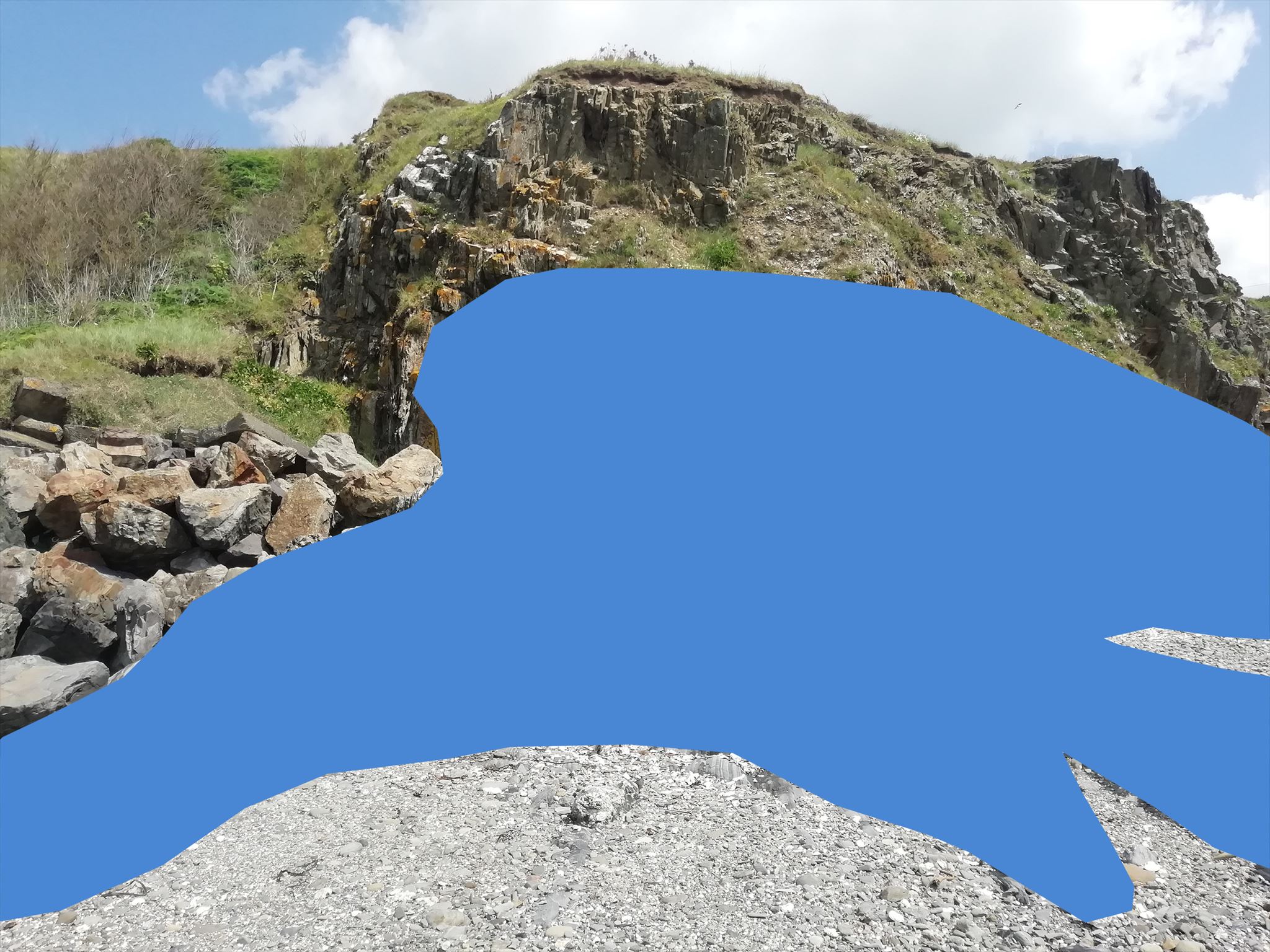
Les schistes rubanés de Saint-Pair

Attention la cache est accessible uniquement à marée basse !
Pensez à consulter les horaires de marées avant de venir sur place.
La formation de Saint-Pair, connue aussi sous le nom de "Schistes rubanés de Saint-Pair” est une formation géologique de type flysch, qui s’est formée pendant le Briovérien inférieur.
Formation des flyschs
Ces alternances de grès et d'argiles se sont formées à l'origine dans un environnement marin. Dans un premier temps, les sédiments qui se déposent sur le plateau continental. Mais les sédiments sont régulièrement déstabilisés par l'action des tempêtes, des mouvements tectoniques ou simplement par leur propre poids. Ils finissent par être entraînés le long de la pente du talus continental, ce qui va provoquer des avalanches sous-marines chargées en boues et en sable. Les sédiments finissent par se déposer au niveau du glacis continental, à l'entrée de la plaine abyssale. Ces avalanches sous-marines vont se répéter régulièrement pour former, à chaque fois une séquence de sédiments se déposant sur la précédente, et intercalée par un niveau plus argileux qui se dépose en période calme. Avec l'enfouissement, le processus de diagenèse commence, transformant les séquences en bancs de grès.

La formation de Saint-Pair
La formation de Saint-Pair est constituée de fines alternances de grès et d’argilites qui renferment de la matière organique (0,49% de carbone), qui donne un caractère remarquablement rubané. Ces alternances résultent de l’empilement de fines séquences granoclassées, millimétriques à décimétriques. Elles sont caractéristiques des turbidites distales qui se déposent loin de la pente sous-marine et des zones d’accumulation des sables et boues argileuses dont elles sont issues.
La formation de Saint-Pair a été intensément déformée par l'intensité des forces de compression qui se sont exercées lors de la formation de la chaîne de montagnes cadomienne.
Questions
Rappel concernant les Earthcaches :
Il n'y a pas de conteneur à rechercher ni de logbook à signer. Après avoir été sur les lieux pour chercher les réponses aux questions, loguez cette cache "Found it" et envoyez-moi vos propositions de réponses, en précisant le code GC de la cache, soit via mon profil, soit via la messagerie geocaching.com (Message Center), et je vous contacterai en cas de problème.
Questions :
1- Quel est le processus qui a transformé les sédiments en roche ?
2- Décrivez-moi la roche dans la zone bleue.
3- Quelle est la nature des bandes claires et des bandes sombres ?
4- Les schistes rubanés de Saint-Pair sont orientés verticalement ou horizontalement ? Expliquer pourquoi.


The ribboned schists of Saint-Pair

Please note that the cache is only accessible at low tide!
Remember to check the tide times before coming to the site.
The Saint-Pair formation, also known as the "Schistes rubanés de Saint-Pair" is a flysch-type geological formation, which formed during the Lower Brioverian.
Flysch formation
These alternating sandstones and clays were originally formed in a marine environment. Initially, the sediments were deposited on the continental shelf. But the sediments are regularly destabilised by the action of storms, tectonic movements or simply by their own weight. Eventually they are carried down the slope of the continental slope, causing submarine avalanches loaded with mud and sand. The sediments are eventually deposited on the continental glacis at the entrance to the abyssal plain. These submarine avalanches are repeated regularly, each time forming a sequence of sediments deposited on top of the previous one, interspersed with a more clayey level that is deposited in calm periods. With burial, the process of diagenesis begins, transforming the sequences into sandstone banks.

The formation of Saint-Pair
The Saint-Pair formation is made up of fine alternations of sandstone and mudstone containing organic matter (0.49% carbon), which gives it a remarkably banded character. These alternations result from the stacking of fine granoclastic sequences, millimetre to decimetre. They are characteristic of distal turbidites that are deposited far from the submarine slope and the accumulation zones of the sands and clayey muds from which they are derived.
The Saint-Pair formation was intensely deformed by the intensity of the compressional forces that occurred during the formation of the Cadomian mountain range.
Questions
Reminder concerning the Earthcaches:
There is no container to look for or a logbook to sign. After having been on the spot to look for the answers to the questions, log this cache "Found it" and send me your answers, specifying the GC code of the cache, either via my profile or via messaging geocaching.com (Message Center), and I will contact you if there is a problem.
Questions :
1- What is the process that transformed the sediment into rock?
2- Describe the rock in the blue area.
3- What is the nature of the light and dark bands?
4- Are the Saint-Pair banded shales oriented vertically or horizontally? Explain why.
